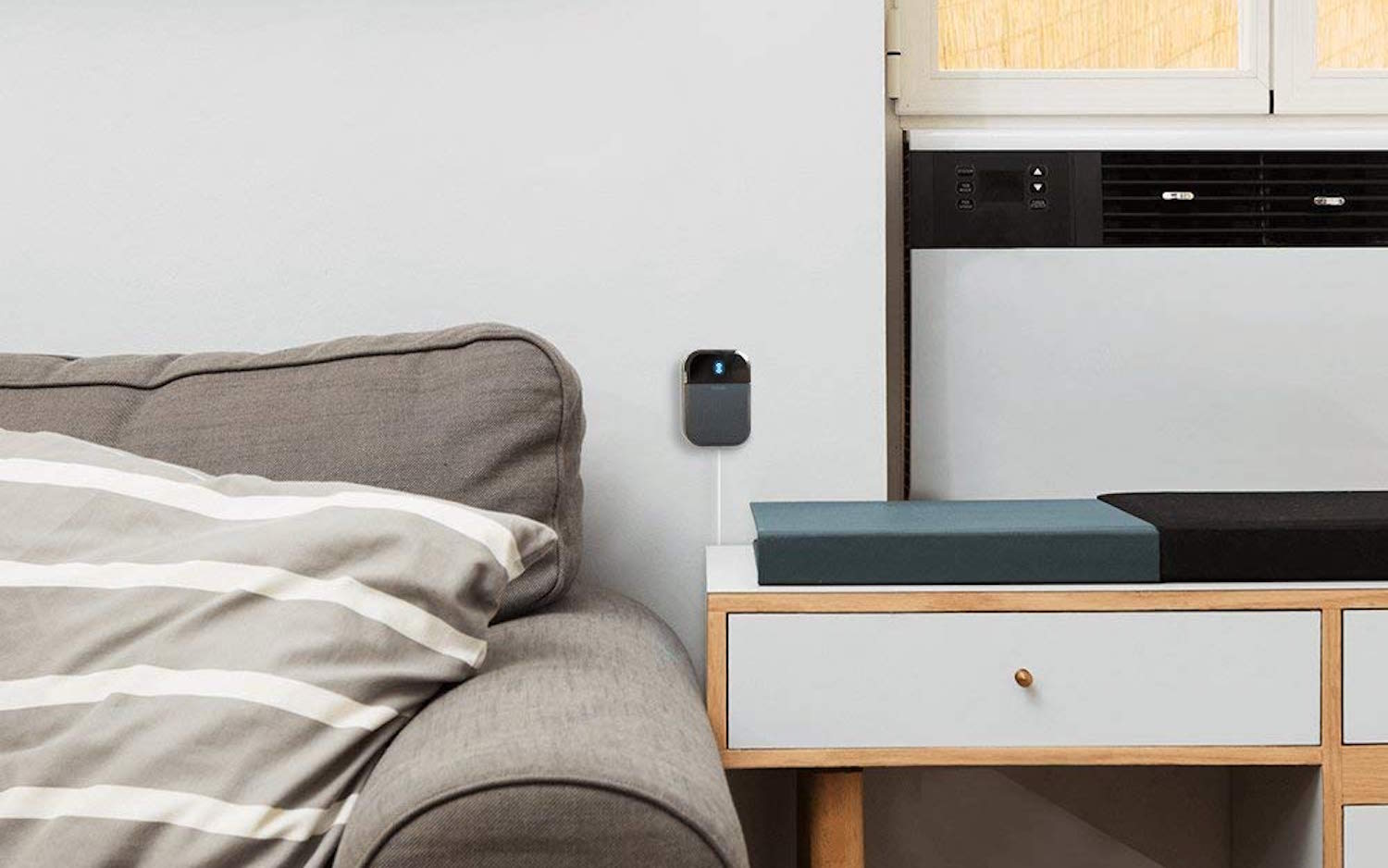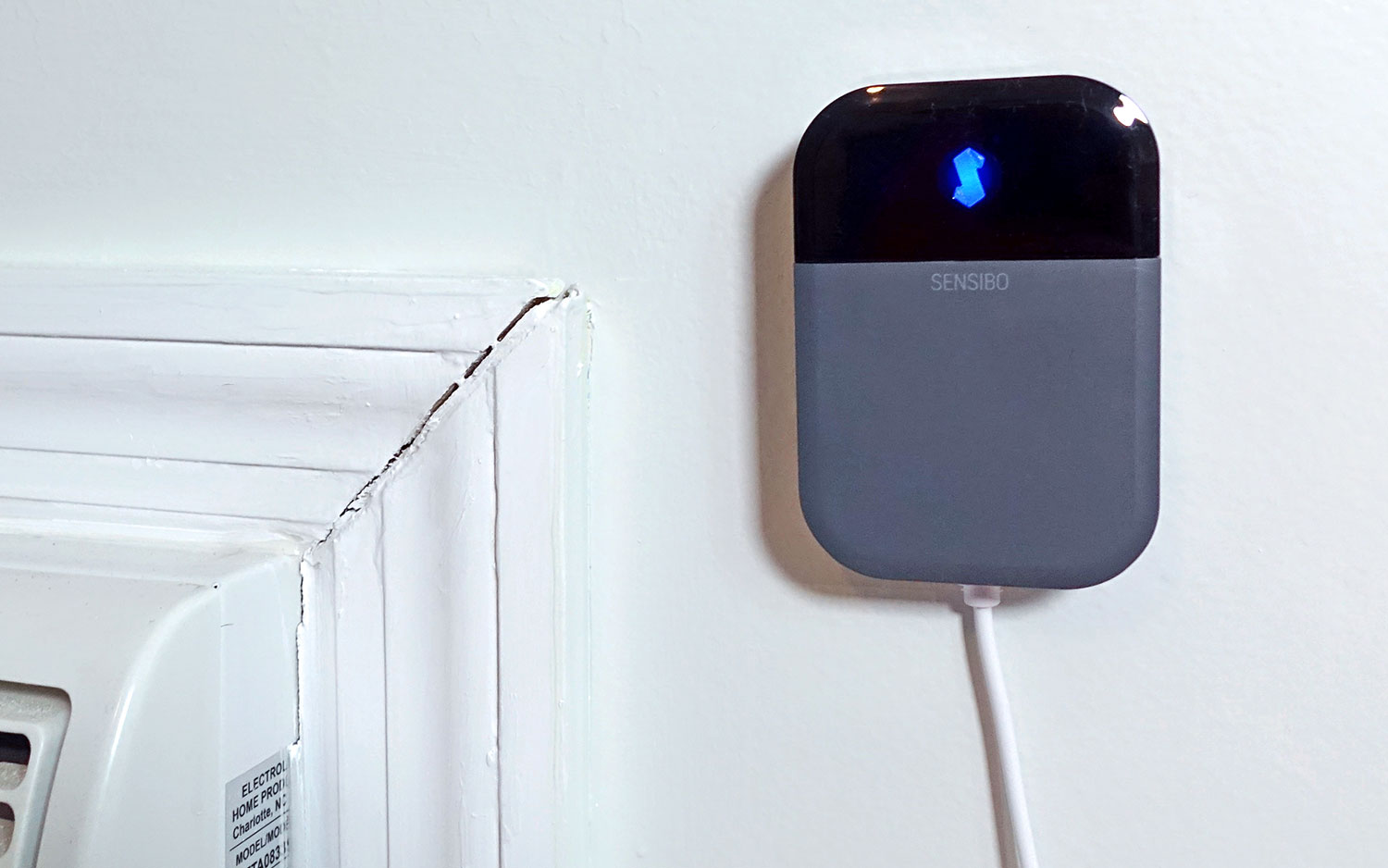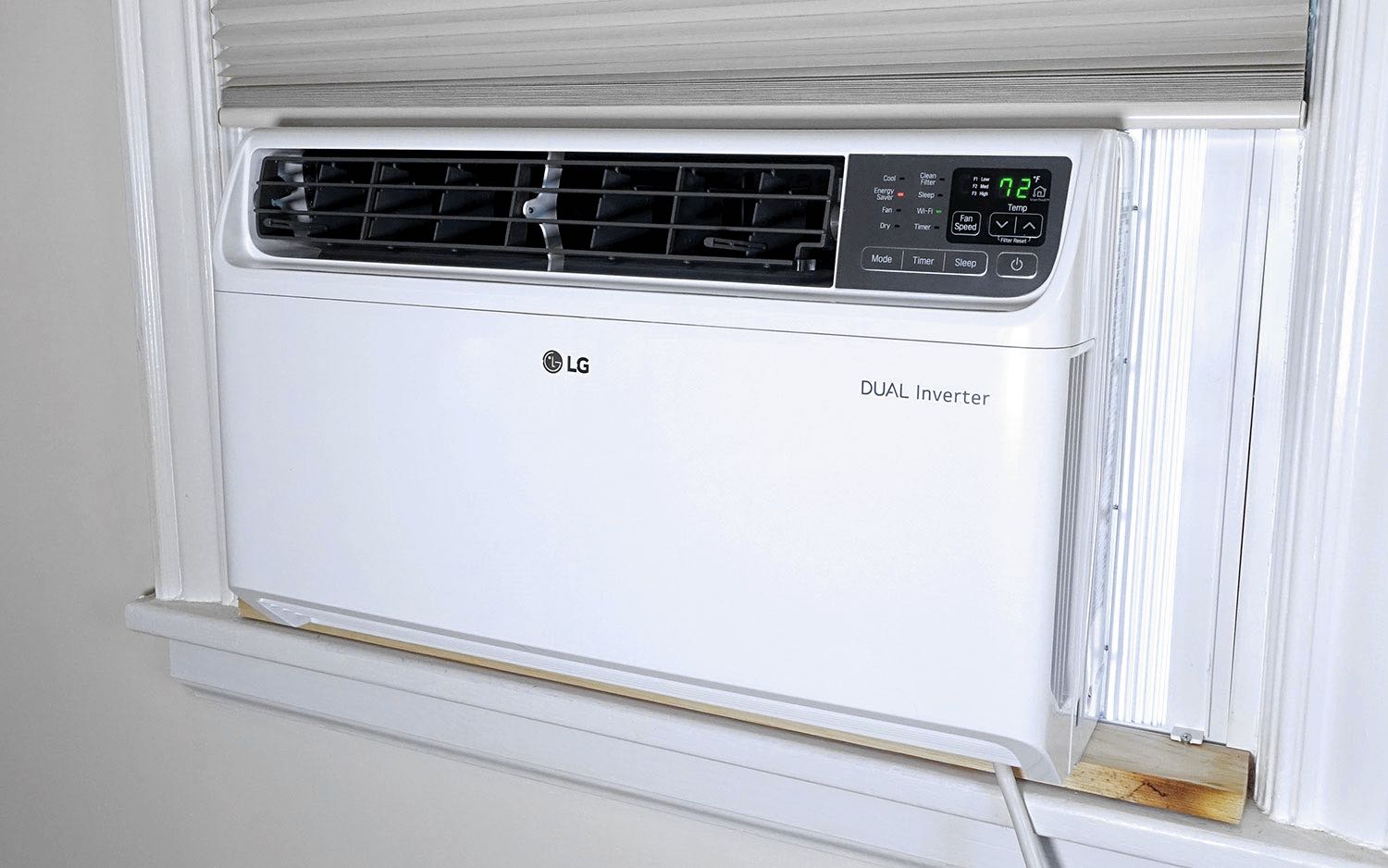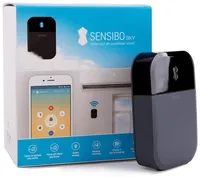I Tried 2 Smart Air Conditioners, and the Cheaper Option Is Better
Whether you want to make your old air conditioner smart or you're ready to invest in a new unit, here's how to keep cool with little fuss.
As I, along with the rest of the East Coast, are gripped in yet another wave of 90-degree-plus heat, I thought, "What better time to test two smart home devices designed to keep my house cool?"

Like most other houses in my neighborhood, mine was built in the 1930s, well before the advent of in-home central air — so using a smart thermostat, like the Ecobee or Nest, is out of the question. Instead, I have to rely on both window and wall air conditioners to keep the heat at a tolerable level.
Fortunately, my air conditioners, all of which are at least 8 years old, are still working well. But, while they have remote controls, there's no way to tie them in with the rest of my smart-home devices. That means I can't control them using my phone or set up scenarios that would cause them to turn on and off depending on the temperature or whether I'm home.
There's more than convenience involved; through smart-home controls, I can have the air conditioners set to one level (or off) while I'm away, another when I arrive home and yet another when I go to bed. That level of customization can save me money on my electric bill.
Making your dumb air conditioner smart
The first smart air-conditioning device I tested — and really like — is the Sensibo Sky ($119). This little device takes the place of your AC's remote and adds a lot of smarts to it, including Alexa and Google Assistant compatibility.

After connecting the Sensibo to my home network through its app, I was able to control it from my phone and set up rules for when it turns on and off. One of its features — which should be on more smart-home devices — is geofencing. As soon as my phone enters a predefined area around my home, the Sensibo tells the air conditioner to kick on. When I leave, it tells the AC to turn off.
As soon as my phone enters a predefined area around my home, the Sensibo tells the air conditioner to kick on. When I leave, it tells the AC to turn off.
I can also set the Sensibo to automatically turn on the air conditioner if the temperature or humidity (or combination thereof) gets too high. And, as all smart-home devices should, the Sensibo lets you control it with Alexa and Google Home. (For example, you can tell the assistant to turn your AC on or off, or set it to a particular temperature.) You can even group the Sensibo with other devices so that, for example, you can have the lights turn on with your air conditioner. However, you do need to buy a Sensibo for each air conditioner you own, so you could quickly spend upward of $500 depending on how many units are in your home.
Get instant access to breaking news, the hottest reviews, great deals and helpful tips.
Buying a new smart air conditioner
What if you're shopping for a new air conditioner? There are a number of smart window, wall and portable units. (Check out our smart air conditioner buying guide.) One of the newest is LG's Dual Inverter window air conditioner, which also has the company's SmartThinQ technology built in. After I installed this beast of an air conditioner — the company sent me the smallest model, which costs $469 and weighs nearly 100 pounds — I sat back in climate-cooled comfort.

LG says its Dual Inverter tech makes its air conditioner quieter and more efficient than traditional models; instead of jumping between high and low settings, it gradually ramps its compressor and fan up and down. It sounds like a very quiet jet plane taking off.
After I installed LG's beast of an air conditioner, which costs $469 and weighs nearly 100 pounds, I sat back in climate-cooled comfort.
Like the Sensibo, LG's air conditioner can be controlled using an app, as well as Alexa and Google Assistant, letting you turn the AC units on and off, and setting the temperature using nothing but your voice. However, in this case, I found that the integration with these smart-home assistants was much less sophisticated. For instance, you have to say, "Alexa, tell LG to turn on the air conditioner," rather than simply saying, "Turn on the air conditioner," as you can with the Sensibo. Also, you can't link LG's air conditioner with other smart-home devices or have it turn on automatically when you arrive home.

After using both for about a week, though, the Sensibo Sky is the smarter — and cheaper — of the two options. It integrates much more deeply with the two leading smart assistants, and its app is much easier to use and has more features than LG's.
Stay tuned for my full reviews of both the Sensibo Sky and the LG air conditioner.
Credit: Tom's Guide

Michael A. Prospero is the U.S. Editor-in-Chief for Tom’s Guide. He oversees all evergreen content and oversees the Homes, Smart Home, and Fitness/Wearables categories for the site. In his spare time, he also tests out the latest drones, electric scooters, and smart home gadgets, such as video doorbells. Before his tenure at Tom's Guide, he was the Reviews Editor for Laptop Magazine, a reporter at Fast Company, the Times of Trenton, and, many eons back, an intern at George magazine. He received his undergraduate degree from Boston College, where he worked on the campus newspaper The Heights, and then attended the Columbia University school of Journalism. When he’s not testing out the latest running watch, electric scooter, or skiing or training for a marathon, he’s probably using the latest sous vide machine, smoker, or pizza oven, to the delight — or chagrin — of his family.


